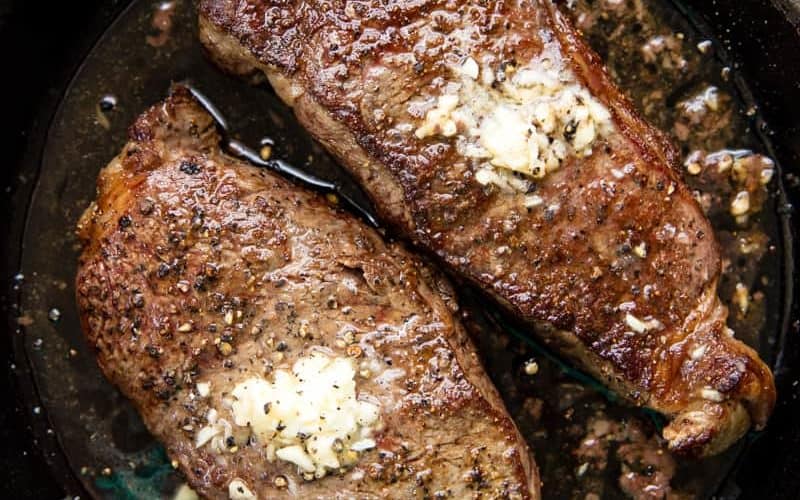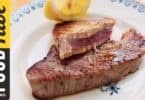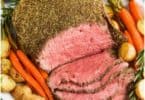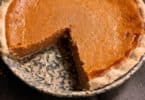Steak is a delectable treat on the grill, but a good steak doesn’t have to be reserved for summer parties or special occasions. Simple, delicious stovetop steak takes only minutes to cook and adds an elegant touch to a meal. Steak is too expensive to waste with poor cooking technique, but following these tips will result in perfect steak every time.
Choosing the Steak
The ideal steak for any cooking method is at least an inch thick and well-marbled. Marbling refers to the white areas of fat within the red meat; a good steak contains an even distribution of fat in small dots throughout, not just a rind of it on the outside of the steak. Filet mignon is the most expensive cut, but steak aficionados often prefer a more flavorful cut like the rib-eye or the porterhouse. Look for the words “rib” or “loin” on the package; loin and rib cuts are more tender than chuck or round cuts.
Prime meat is the highest grade, but can be hard to find in supermarkets. Choice is the grade below and makes a good home-cooked steak. Select meat is generally too lean; though it can be delicious using other cooking techniques, it isn’t ideal for stovetop cooking.
Preparation
Salt and pepper the steak to taste just before cooking. Adding salt too soon can draw out the meat’s juices and leave the finished steak dry. A well-chosen steak needs no other spices, but a pinch or two of garlic salt or seasoning salt applied with a light hand won’t overwhelm the taste of the meat. Avoid marinades; any water-based liquid in the pan will boil the steak instead of pan-searing, and boiled steak is not appetizing.
If the steak has a rim of fat on it, resist the temptation to trim it away. Steak needs fat to cook, and leaving the fat on to be trimmed at the table results in a tastier, richer cut of meat.
Cooking
The key to a perfect steak on the stove is searing the meat properly. Although it’s a myth that searing “seals in the juices,” it’s true that a good sear is crucial to a steak’s flavor and texture.
Place a large stainless steel or cast iron pan (not a non-stick pan, as non-stick coatings don’t tolerate high heat well) over very high heat on the stove. Add just enough peanut or canola oil to coat the bottom of the pan, perhaps two or three tablespoons. When the oil is hot enough to move like water in the pan when swirled around, use kitchen tongs to add the steaks to the pan, largest side down.
Let the steaks sear on high heat without disturbing them for 3 to 5 minutes. When they’ve seared properly, steaks will release from the pan and not stick. If the steak sticks, leave it alone until it releases easily to ensure the perfect sear. Turn the steaks once and let cook undisturbed for another 3 to 5 minutes depending on desired degree of doneness.
Only a meat thermometer can assess the exact internal temperature of a steak, but if one isn’t handy, try this test for doneness. Poke the steak quickly with a finger. If the steak feels as soft as the fleshiest part of the earlobe, it’s rare. A steak that has the same texture as the cheek is medium-rare to medium. If the meat feels as firm as the side of the nose, it’s medium-well. And a well-done steak is quite firm like the tip of the nose. Resist the urge to slice into the steak as it cooks. An underdone steak can always go back into a hot pan for a minute or two, but a steak that’s lost its juices to the pan will be dry.
Serving
Steaks, like some chefs, need a rest before dinner. Remove the steaks from the pan and transfer them to a cutting board, then cover with foil for four to five minutes before serving them.
Although pan-seared steak is delectable by itself, the remaining juices in the pan can make a delicious sauce to accompany it. Add three tablespoons of butter, half a cup of red wine, some freshly ground black pepper, and a dash of spicy mustard to the pan and stir as it simmers while the steaks are resting. Serve alongside or atop the steaks.
<>







